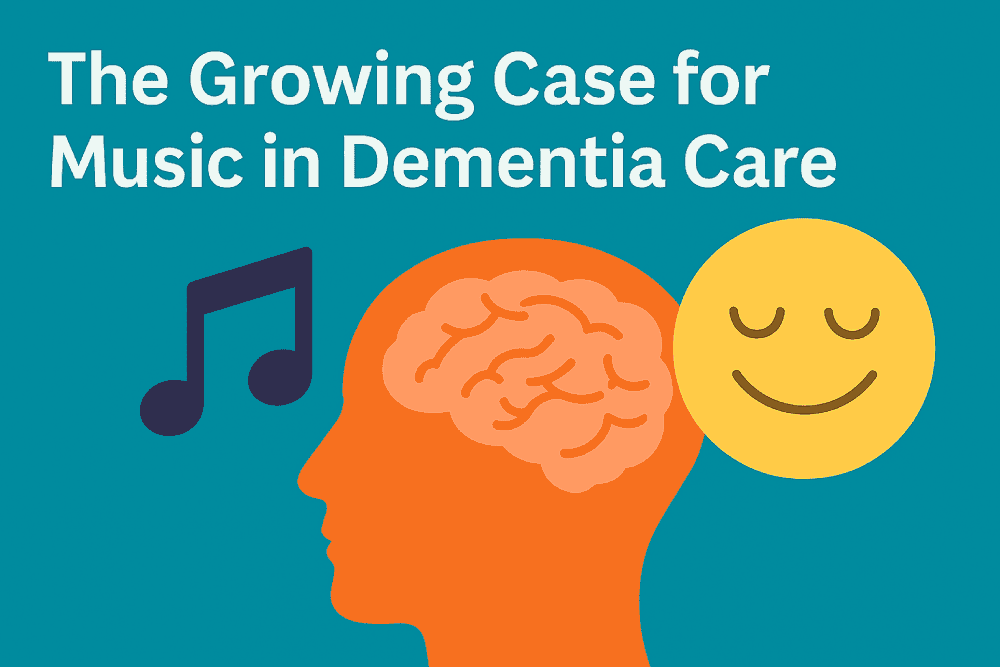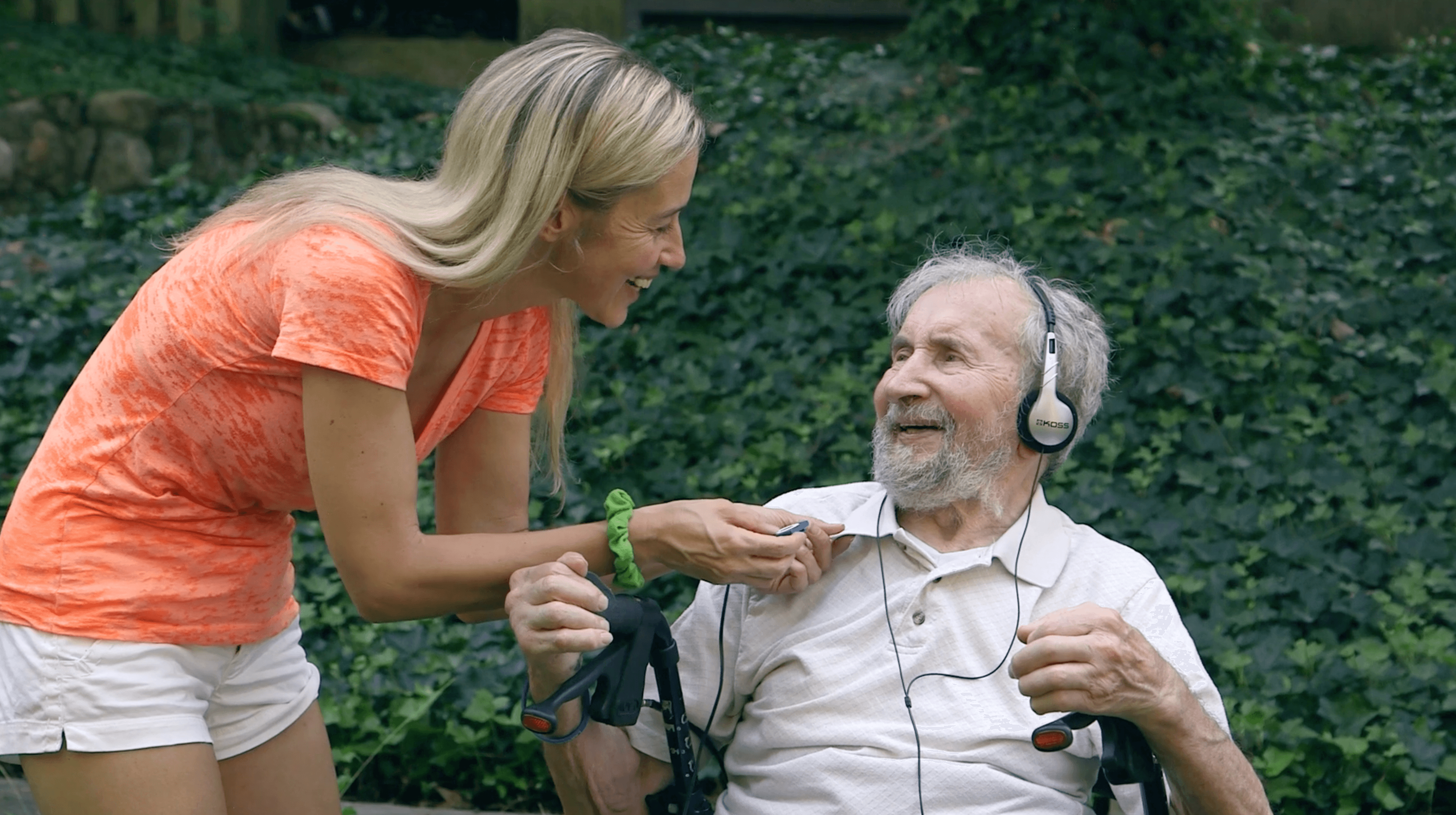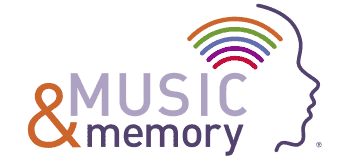
Since its founding in 2010, MUSIC & MEMORY® has worked to make personalized music a standard, non-pharmacological component of dementia care. The program is built around a simple, evidence-informed idea: that favorite, personally meaningful music can support improved quality of life for individuals living with dementia and related cognitive challenges.
Across all 50 states, thousands of care professionals have been trained to implement the program, and over 5,800 healthcare sites—including nursing homes, adult day programs, hospice providers, and memory care communities—have brought personalized playlists to the people they serve.
Music & Memory’s model, grounded in music therapy best practices, is distinguished by its practical focus on equipping care teams with actionable training and tools. By helping care professionals learn how to select, deliver, and integrate personalized music into daily care routines, the program supports a range of important clinical outcomes: reducing agitation and distress, improving sleep, enhancing mood, strengthening social engagement, and in many cases reducing reliance on antipsychotic medications. The Fund for NYC Health + Hospitals’ short film, Healing with Harmony: A Music & Memory Story, beautifully captures the heart of this mission and its impact on residents and staff.
The program has gained traction over recent years not through marketing, but through demonstrated impact in the field. One of the earliest large-scale validations of this approach came in Wisconsin, where the Department of Health Services launched a Music & Memory initiative across 100 long-term care facilities in 2013. Within one year, Wisconsin’s use of antipsychotic medications in nursing homes had dropped significantly. The state rose from 10th to 4th nationally in reducing antipsychotic use, with the percentage of residents on antipsychotics falling from 17.4% to 14.6%. Importantly, this improvement was not driven by reduced prescribing alone, but by the introduction of an effective alternative that provided comfort and support to residents through non-pharmacological means.
Following this success, Wisconsin expanded the program statewide, ultimately certifying every nursing home in the state in Music & Memory’s personalized music approach. The initiative also introduced an intergenerational component, connecting 50 nursing homes with local middle schools, high schools, and colleges to further enrich the program’s delivery.
Wisconsin’s results drew national attention, prompting other states to explore similar models. In 2014, Missouri, Ohio, and Utah each launched statewide Music & Memory initiatives, followed by six additional states in 2015 and ten more in 2016. Over the following years, 29 states incorporated Music & Memory into their dementia care strategies through partnerships with state departments of health and aging.
One of the most notable examples is Texas, where Music & Memory was implemented in over 1,000 nursing homes through a state-supported initiative launched in 2015. The program was piloted first in nursing facilities and later expanded to include state-supported living centers and Austin State Hospital. Texas has since achieved a 58% reduction in the use of antipsychotic drugs in nursing facilities—more than any other state, according to data from the National Partnership to Improve Dementia Care in Nursing Homes.
The Texas example underscores a key strength of personalized music as an intervention: it offers care teams a concrete tool to address common behavioral and psychological symptoms of dementia (BPSD), while supporting person-centered care and quality of life. Antipsychotic use is a critical marker in dementia care, but so too are the daily experiences of residents—their ability to connect, to feel calm, to participate in activities, and to maintain dignity and comfort. Music & Memory supports these outcomes by helping care staff deliver interventions that are meaningful, personal, and easily integrated into routine care.

To date, Music & Memory remains the only personalized music program to have been formally adopted through policy in nearly 30 states. Its success has been driven by a combination of practical training, clinical relevance, and scalability—a model that works within real-world care environments and aligns with broader efforts to promote non-pharmacological approaches in dementia care.
Recent research continues to validate this approach. A new economic analysis from the NeuroArts Blueprint Initiative, backed by AARP and conducted by Deloitte, has found that music engagement in Alzheimer’s care yields a return on investment (ROI) of up to $2.40 for every $1 spent annually. For individuals with Alzheimer’s disease, the estimated ROI is $1.70 per dollar, with an additional $0.70 per dollar benefit for caregivers.
These findings add quantitative support to what care professionals and families have observed qualitatively for years. Music-based interventions can help reduce the need for medications, ease caregiver burden, support emotional well-being, and enhance daily life for individuals with dementia. Importantly, these benefits can be delivered through scalable, person-centered programs like Music & Memory—an essential consideration as the number of individuals living with dementia continues to grow.
Music & Memory, now a service of the Institute for Music and Neurologic Function (IMNF), continues to support efforts to integrate music engagement more fully into healthcare and long-term care. The NeuroArts Blueprint report provides further validation for this work and underscores the importance of building sustainable, person-directed music programs across care settings.
The goal is to continue expanding access to effective, scalable music engagement strategies—ensuring that personalized music becomes an integral part of dementia care across settings and populations. As this work moves forward, Music & Memory remains focused on equipping care teams with the tools, training, and support they need to deliver high-quality, person-centered music interventions at scale.
Now is the time to embrace music engagement as a core practice in dementia care, where it can deliver meaningful benefits every day.
